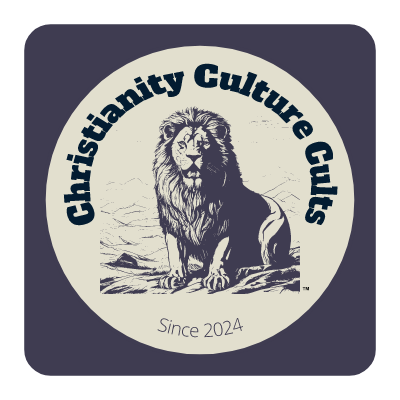1. Historical and Textual Criticism
- Textual Variants:
- The Sana’a manuscript discovery revealed early Quranic texts with variations from the standard text.
- Differences between the Hafs and Warsh recitations of the Quran, which are used in different regions.
- Reports of early Muslim scholars noting discrepancies in the Quranic manuscripts, such as the work of Ibn Masud.
2. Scientific Inaccuracies
- Embryology:
- Surah 23:14 describes the development of a human embryo as “a leech-like clot,” which critics argue is not accurate according to modern embryology.
- Cosmology:
- Surah 18:86 describes the sun setting in a muddy spring, which contradicts astronomical understanding.
- Mountains as Stabilizers:
- Surah 16:15 states that mountains were placed on Earth to prevent it from shaking, a claim not supported by geology.
3. Internal Inconsistencies
- Creation Accounts:
- Surah 7:54 states that the heavens and the Earth were created in six days, while Surah 41:9-12 suggests eight days.
- Predestination vs. Free Will:
- Surah 57:22 implies that all events are predestined, whereas Surah 2:256 emphasizes human free will in the context of religion.
- Consumption of Alcohol:
- Surah 2:219 and Surah 4:43 advise against intoxication, while Surah 16:67 seems to suggest it is a blessing.
4. Ethical Concerns
- Slavery:
- Surah 4:24 allows for sexual relations with enslaved women, raising ethical concerns.
- Treatment of Women:
- Surah 4:34 describes men as guardians over women and permits husbands to discipline their wives.
- Violence against Non-Believers:
- Surah 9:5, often referred to as the “Sword Verse,” calls for fighting and slaying non-believers under certain circumstances.
5. Borrowed Content
- Biblical Stories:
- The story of Noah and the flood in Surah 11 closely parallels the account in Genesis.
- The Story of Moses:
- Surah 28 recounts the story of Moses with significant similarities to the Biblical narrative in Exodus.
- The Virgin Birth of Jesus:
- The account of Jesus’ birth in Surah 19 reflects the Christian nativity story found in the Gospels.
6. Historical Anachronisms
- Pharaoh’s Title:
- Surah 12 refers to the ruler of Egypt as “Pharaoh” during Joseph’s time, while historical records indicate the title “Pharaoh” was not used until the New Kingdom period.
- Haman in Egypt:
- Surah 28 mentions Haman as a court official in Pharaoh’s Egypt, a name known from the Persian period in the Book of Esther.
- Crucifixion Timing:
- Surah 4:157 denies Jesus’ crucifixion, conflicting with strong historical evidence supporting the event’s occurrence in the 1st century.
7. Lack of Prophetic Miracles
- Miracles in Comparison:
- Critics point out that other prophets, such as Moses with the parting of the Red Sea (Exodus 14:21) and Jesus with numerous miracles (healing the blind, raising the dead, etc.), provided clear miraculous signs.
- The Quran as the Miracle:
- The claim that the Quran’s linguistic beauty is a miracle is subjective and not a universally accepted criterion for divine origin.
8. Complex and Ambiguous Language
- Multiple Interpretations:
- Surah 3:7 acknowledges that some Quranic verses are ambiguous, leading to various interpretations among scholars.
- Allegorical Content:
- Verses like Surah 24:35 use elaborate metaphors (e.g., “Allah is the Light of the heavens and the Earth”) that require extensive exegesis to understand.
- Legal Ambiguities:
- Surah 5:38 prescribes hand amputation for theft, but does not specify conditions or limits, leading to different interpretations in Islamic jurisprudence.
9. Contextual Dependency
- Reliance on Hadith:
- The interpretation and implementation of many Quranic injunctions, such as the five daily prayers (Salah), are not detailed in the Quran and rely heavily on Hadith.
- Asbab al-Nuzul (Reasons for Revelation):
- Understanding the context of specific revelations often requires historical and situational context provided by Hadith and Sirah literature.
- Abrogation (Naskh):
- Verses like Surah 2:106 suggest that some earlier verses are abrogated by later ones, raising questions about the consistency and permanence of divine commands.
10. Questionable Revelatory Process
- Gradual Revelation:
- The Quran was revealed over 23 years in response to specific events, which critics argue reflects situational human responses rather than timeless divine instruction.
- Compilation Process:
- The collection and compilation of the Quran after Muhammad’s death, particularly under Caliph Uthman, involved selecting and standardizing the text, suggesting human influence.
- Oral Tradition:
- The initial reliance on oral transmission before the written compilation introduces the possibility of human error and alterations.
Conclusion
These arguments challenge the Quran’s status as the unaltered, divine word of God by highlighting potential historical, scientific, ethical, and textual issues. Each point is subject to extensive debate, with Muslim scholars offering counter-arguments and interpretations to defend the Quran’s divine origin and integrity. Engaging with these arguments requires careful consideration of both the Quranic text and broader religious and historical contexts.
